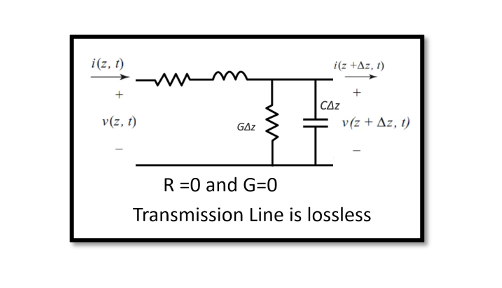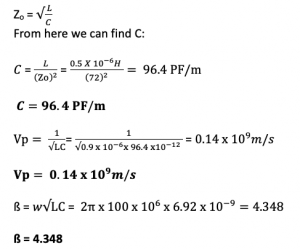
What is a Lossless Transmission Line?
In a transmission line, the four primary distributed parameters are resistance (R), capacitance (C), inductance (I), and conductance (G). The secondary constants are the characteristic impedance (Zo) and complex propagation constant (y) that are derived using the primary parameters.
Transmission Line
In this blog, we will discuss about lossless transmission lines involving the primary parameters and what role they play in this. Most of the time we assume that the transmission line is lossless, but practically it’s not possible to have a completely lossless transmission line. So what is the loss anyways? The resistor consumes power from our circuits. The power for the resistor is V.I. So when we say lossless, we are assuming there is no resistance, which means resistance and conductance will be zero. Let’s define the lossless transmission line.
When a transmission line has no line resistance or dielectric loss it is said to be a lossless transmission line, which would mean there is no power dissipation. So, it acts like a perfect conductor. In the real world it’s not possible to model a lossless transmission line however we study this as it makes it simpler for understanding and analysing a transmission line
These equations have been derived in our blog transmission line phasor equation. From the previous blog, we know that the transmission coefficient gamma (γ) is equal to α+ßj, α becomes 0 in lossless. If the transmission line is lossless then the equation becomes:
Example of lossless transmission line
Let’s do an example to understand. Example of a lossless transmission line:
Example: The characteristic impedance of the transmission line is 72Ω and the frequency is 100MHz. The L is 0.5µH/m. Find the capacitance, phase velocity (Vp), and ß.
From the previous blog, we know that the characteristic impedance of a transmission line is the ratio of amplitudes of current and voltage of a single wave propagating along a line. Read more about ‘’What is characteristic impedance in Transmission lines’’ and propagation velocity. So if we know the four primary parameters, we can calculate the Zo.

R and G are zero here as we said for a lossless transmission line the resistance is zero. So Zo becomes:
So a wave will propagate with a speed of 0.14 x 109 m/s within the transmission line.

Learn more about this topic by taking the complete course ‘RF Microwave and Radio Frequency Transmission Theory Online Course – RAHRF200’. Watch the course videos for more detailed understanding. Also checkout other courses on RF system and IC design on https://rahsoft.com/courses/. Rahsoft also provides a certificate on Radio Frequency. All the courses offer step by step approach.



